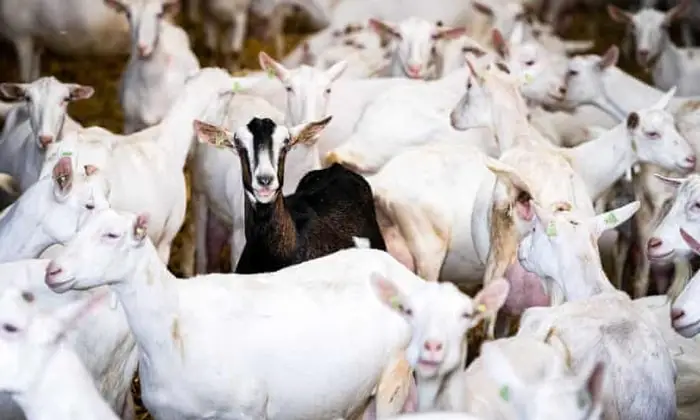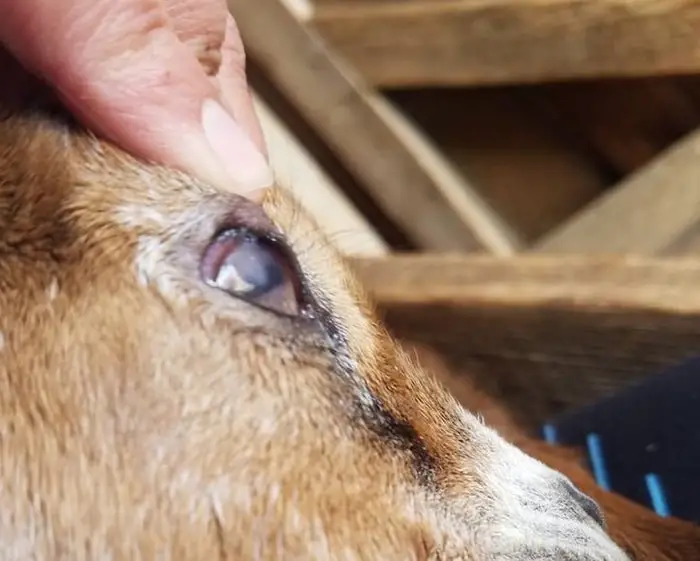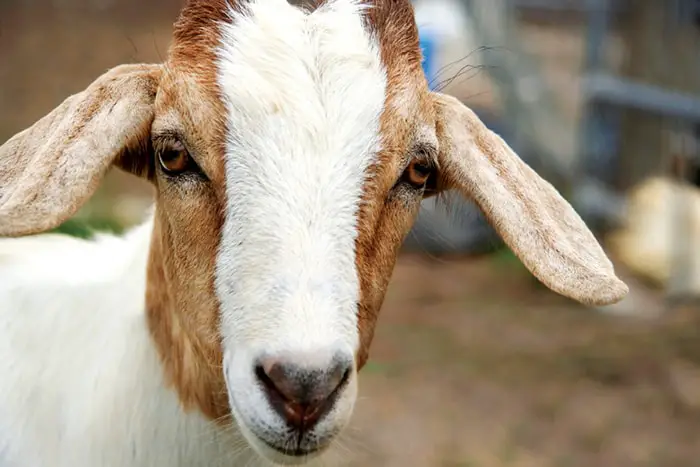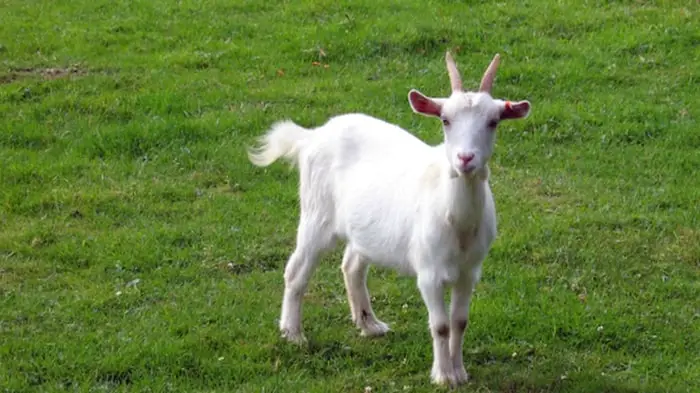Infectious Keratoconjunctivitis or Pinkeye in goats is one of the most common eye infections. The disease may affect one or both eyes and spread very rapidly within the herd. Pinkeye is characterized by redness of the eye, conjunctivitis, lacrimation, blepharospasm, photophobia, deposition of dust in eyes, corneal opacity, cataract, and partial to complete blindness. The disease has seen almost all age groups of goats, but young goats are more susceptible. The disease is mainly seen in the summer and autumn when the presence of risk factors is more.
What Causes Pinkeye in Goats?
Both infectious or non-infectious agents may cause pinkeye in goats. Moraxella bovis is the most common causal agent of Infectious Bovine Keratoconjunctivitis (IBK). The other species involved for IBK are Moraxella Ovis, Moraxella bovovuli, several Mycoplasma spp, Bovine Herpesvirus-1, and Infectious Bovine Rhinotracheitis (IBR), also responsible for pinkeye in goats. Other organisms responsible for Conjunctivitis in goats are:
- Mycoplasma conjunctivae.
- Moraxella ovis.
- Chlamydia spectrum.
- Listeria monocytogenis.
- Theileria spp.
- Colesieota conjunctivae.
- Acholeplasma oculi.

Risk Factors of Conjunctivitis in Goats
The predisposing factors of the disease are:
- Hot and humid environment.
- Animals exposed to Ultraviolet irradiation.
- Presence of excessive flies in the house.
- Mechanical irritation by grass or weeds.
- Deficiency of certain trace minerals like copper and selenium.
- Stress due to overcrowding, transport, or poor nutrition.

Clinical Signs of Pinkeye in Goats
The disease spread very rapidly, and clinical signs in the affected animals are observed:
- Closure of eyes due to photophobia.
- Blepharospasm.
- Excessive lacrimation.
- Conjunctivitis with or without keratitis.
- The ocular discharge becomes mucopurulent.
- Partial to complete blindness of eyes.
- The cornea may be affected and become whitish, dark, or blue.
- Weakness.
- Loss of body condition.
- Secondary infection by other opportunistic bacteria.
- Death of the animals occurs due to secondary infections.

Diagnosis of Conjunctivitis in Goats
The disease can be diagnosed in the following ways:
- History of exposure to sick animals.
- History of stress and living conditions.
- Specific clinical signs.
- Collection of ocular discharge and culture of causative bacteria.
- Molecular diagnosis methods help to diagnose rapidly that includes PCR.

How do you treat pink eye in goats?
The disease can be cured easily if you are diagnosed early and start treatment immediately. The treatment strategies of pinkeye in goats are:
- Cleaning of eyes with a mild antiseptic solution.
- Apply broad-spectrum antibiotic eye drops on both eyes.
- Isolation of sick animals from the healthy herd.
- You can be administered antibiotics parenterally like Oxytetracycline for a better effect.
- Antibiotic ointments can be given to eyes that persist for a longer duration.

Prevention of Conjunctivitis on Goats
Conjunctivitis is a managemental disease in goats, sheep, and cattle farms. The disease can be prevented within the farm by following strict biosecurity and good management. The preventive suggestions are:
- Reduce the stress on the farm.
- Special care must be taken after every transportation.
- Clean the house daily with antiseptics.
- Provide balanced nutrition to animals.
- Avoid or remove disturbing plants or weeds from the feed.
- Take special care during summer.